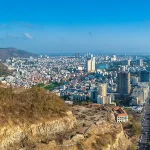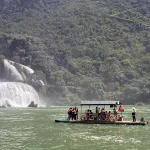Make Space for What Matters
Before your adventure begins, your gear sets the tone. This travel packing guide walks you through what to bring (and what to skip), so your bag works with you — not against you — wherever the road leads. It is designed to help you pack smart, pack light, and travel confidently.
No business trips here—this one’s for real travelers: holidaymakers, solo wanderers, and families on the move. We’ll walk you through the essentials, practical strategies, and smart packing hacks that make all the difference.
Mastering what’s in this article earns you the blue stripe on your Trip Kwon Do green belt. It means you’re not just throwing clothes in a bag — you’re packing with strategy, intention, and confidence. And if you’re still brushing up on the basics, no worries — our beginner-level guides in the Travel Academy have you covered.
Let’s walk through everything you need to pack well — and start strong.
Table of Contents
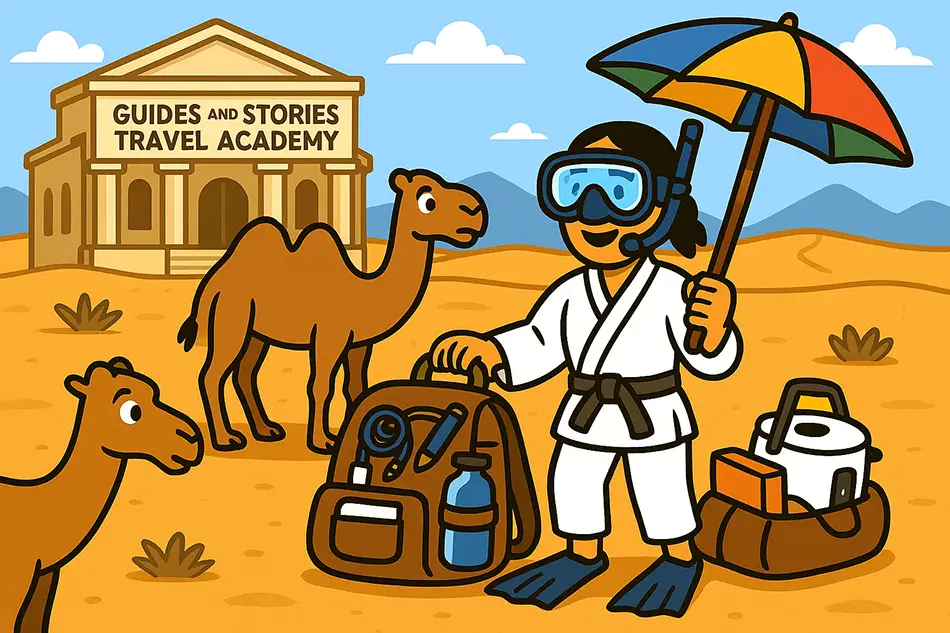
The Packing Mindset: Pack Less, Pack Smarter
Packing well isn’t just about fitting everything into your bag—it’s about choosing with intention so your luggage works for you, not against you.
There are really two ways people move toward their version of perfect packing.
The first is by taking way too much. You cram everything in—outfits for every mood, backups for your backups, things you haven’t used in years but suddenly feel essential. Then halfway through the trip, your back starts aching, your bag bursts at the seams, and you realize you’ve spent extra on luggage fees just to haul around stuff you never touched. The bottom of your backpack becomes a graveyard of “seemed like a good idea.”
The second way is more radical—but also more revealing. You pack the absolute basics: phone, passport, bank card, some cash, and a pair of shades. Then you hit the road. And as needs come up, you solve them. You buy a T-shirt, a toothbrush, or flip-flops. And suddenly, you’re carrying only what you’ve proven you actually need. For many travelers, that’s how the real packing lessons stick— not in your suitcase, but in your habits for the next trip.
Most of us land somewhere in the middle. But the takeaway is the same: pack less, pack smarter, and trust that you’ll figure it out. The world is rarely as inconvenient as your anxiety tells you it will be.
This minimalist packing approach helps you:
- Move faster through airports and stations
- Save money on baggage fees
- Stay organized and stress-free
- Adapt easily as your trip evolves
So here’s your first real packing upgrade: start light, stay flexible, and let the journey teach you what really matters.
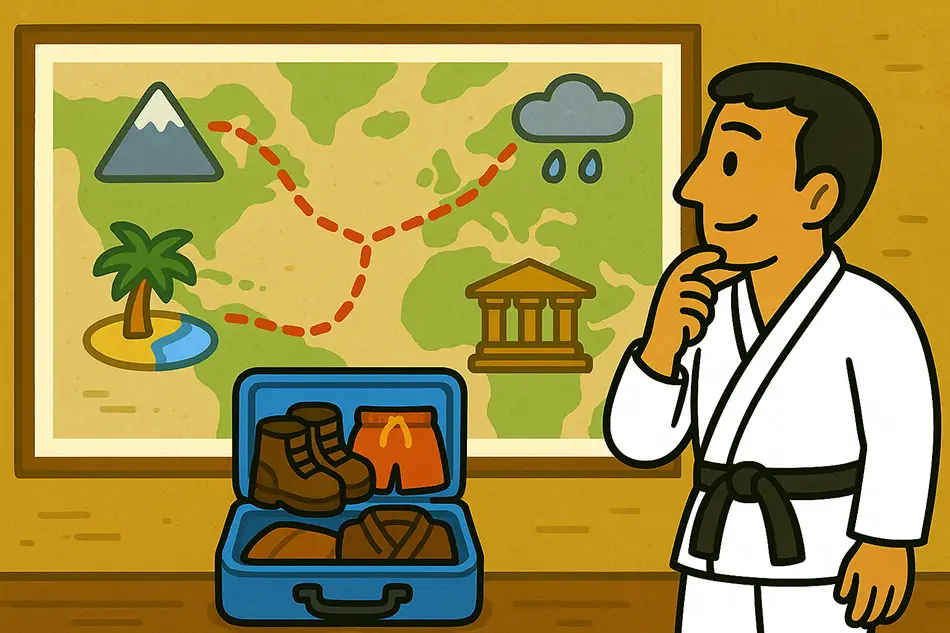
Pack with a Plan
Good travel packing starts before your bag is even open. The more clearly you picture where you’re going, what you’ll be doing, and how you’ll move through the journey, the easier it is to pack with confidence.
Trip preparation and destination research shape your packing more than any fancy bag or folding trick ever will. The climate, the pace of the trip, the cultural norms, and the type of movement you’ll be doing — all of that should inform what you bring. Planning is part of packing.
And if you’re not sure where to start, our Trip Preparation Guide breaks it all down step by step.
Research Your Destination
Look into:
- Weather and climate: Will it be dry heat, sticky humidity, or chilly nights?
- Terrain: Will you be walking on sand, cobblestones, or mountain paths?
- Cultural expectations: Are there modesty norms for clothing, especially in religious areas?
- Activities you’ll do: Will you be hiking, swimming, visiting temples, cycling, or going out at night?
- Laundry access: Can you wash your clothes easily, or should you pack enough to last the full trip?
- Local infrastructure: Will you be using public transport, riding a scooter, or carrying your bag up stairs and across uneven roads?
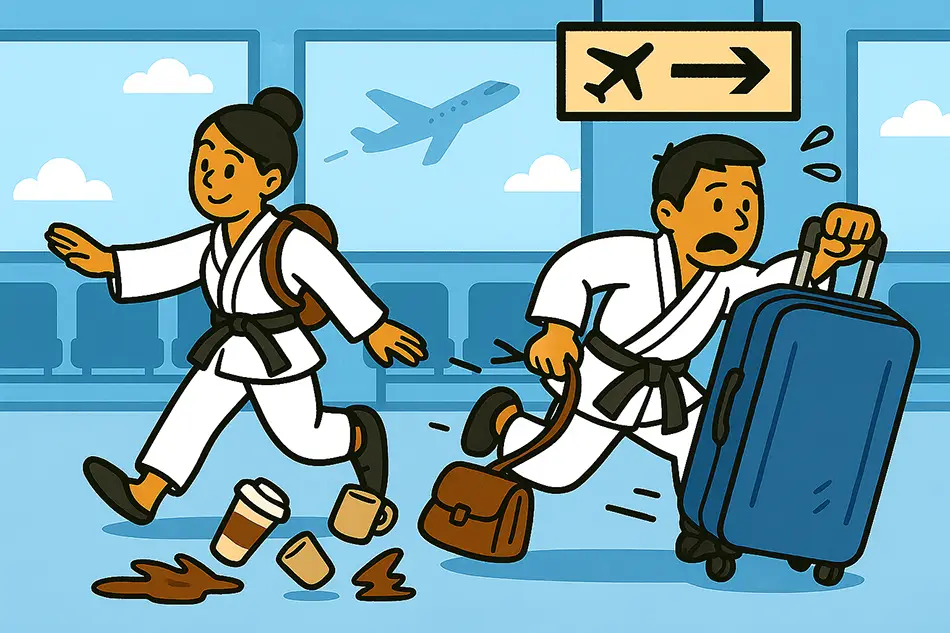
Choosing the Right Luggage
Your luggage should suit your trip, your movement style, and your destination. There’s no one-size-fits-all, but here’s how to choose the best option for you.
Backpack vs. Suitcase vs. Duffel
Backpack is ideal for trips that involve a lot of walking, uneven roads, or moving from place to place. Look for padded straps, multiple compartments, and front-loading designs.
Suitcase is the best for city breaks, long stays in one location, or travel that doesn’t require much movement between destinations. Four-wheeled models offer easy mobility.
Duffel Bag is great for road trips, weekend getaways, or when you need flexibility and don’t want to deal with wheels or rigid frames.
Choose based on how much you’ll be carrying your bag vs. rolling it. A suitcase might be easier in airports, but a backpack is unbeatable when you’re jumping between trains or walking cobbled streets.
Carry-On Only vs. Checked Bag
Traveling with just a carry-on is liberating. You save time at check-in and baggage claim, reduce the chance of losing your luggage, and cut down on baggage fees, especially with budget airlines. Plus, packing light makes transitions smoother—whether you’re hopping trains, changing cities, or simply moving through the airport with ease.
Still, there are times when checking a bag makes sense:
- Longer trips (3+ weeks)
- Traveling with sports or camping gear
- Packing gifts on the way back
Whichever option you go with, make sure to check your airline’s latest baggage policies—some now charge even for carry-ons, and restrictions vary widely.
Pro Tip
Running out of weight allowance but want to avoid checking a bag? Wear your heaviest items—like hiking boots, a thick coat, or a bulky sweater—on travel day. Not only will it free up space in your bag, but it’ll also keep you warm on chilly planes and buses.
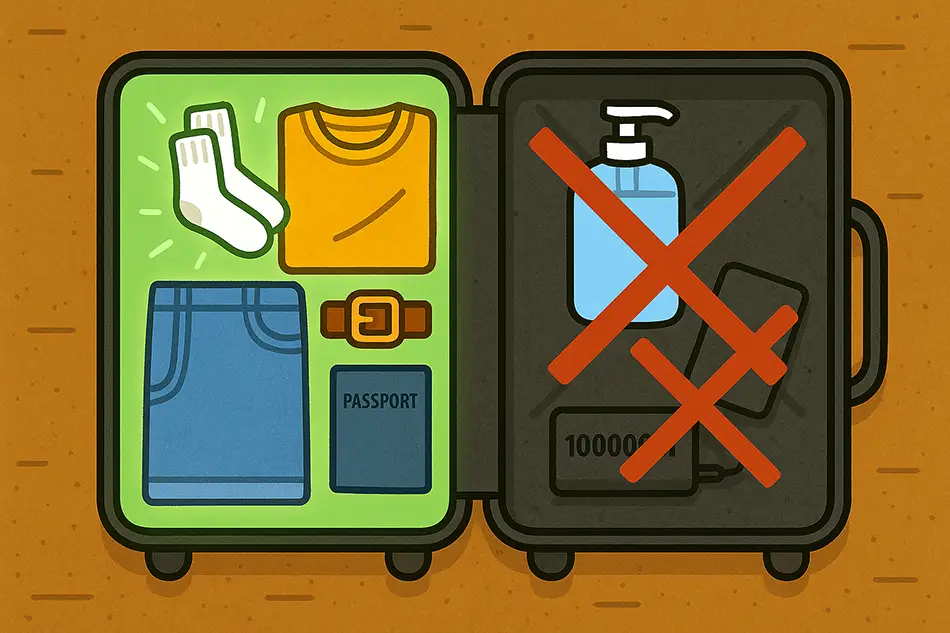
Also it is important to know what’s allowed in each bag, especially when planning your carry-on packing strategy.
Items NOT allowed in carry-on (hand luggage):
- Liquids over 3.4 oz (100 ml)
- Sharp objects (like scissors, razors, knives)
- Tools, flammables, and sporting equipment
- Power banks over 27,000 mAh (approx. 100 Wh) — anything above this limit is usually prohibited by airlines.
Items NOT allowed in checked luggage:
- Power banks
- Lithium batteries
- Fragile electronics
Travelers share
“The only item I truly miss not being allowed in my carry-on is my nail clipper. But honestly, the price of buying a new one at my destination is a small trade-off for the freedom and ease of going light. No regrets.”
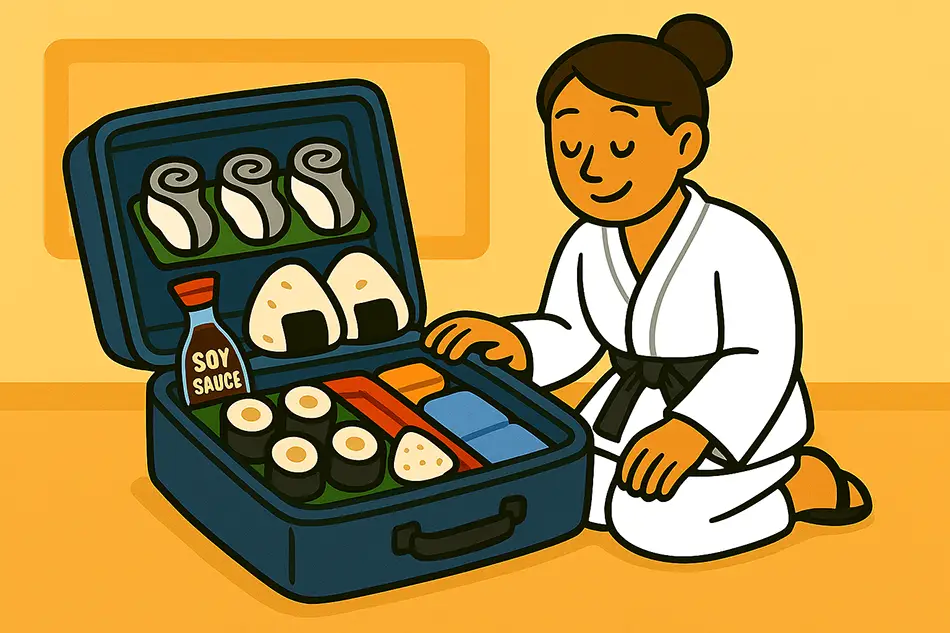
What to Pack: Essential Categories
Rather than listing every possible item, this part of the travel essentials guide offers flexible categories to help you shape your own list. These aren’t strict rules—just useful frameworks for creating a packing system that fits your trip.
Travel Documents & Money
- Passport (check expiration date!)
- Visas (printed + digital, depending on country)
- Driver’s license or international driving permit (if needed)
- Travel insurance policy
- Credit cards and some local cash
- Emergency contact info and copies of key documents (kept separately or in the cloud)
Clothing & Footwear
Think versatile, layerable, and destination-appropriate. Choose fabrics that don’t wrinkle easily and dry quickly—especially if you’ll be doing laundry on the go or traveling through multiple climates. Pack in outfits, not in single pieces. Make sure everything works together, layers easily, and reflects what you’ll actually wear—not what you might wear.
- 2–3 pairs of bottoms (pants, shorts, or skirts — based on climate and comfort)
- 3–4 tops (mix of short- and long-sleeve, breathable and layerable)
- 1 outfit for a dressier occasion (dinner, event, or cultural visit)
- Underwear for 5–7 days
- 1 lightweight jacket, fleece, or sweater for cooler evenings
- 1 swimsuit or swim gear if relevant to your trip
- 3 pairs of shoes max: one for everyday walking, one for specific activities (like hiking), and one light pair for relaxing, showers, or hostel use
Toiletries & Personal Care
- Travel-size toothbrush and toothpaste
- Deodorant (stick or cream to avoid aerosol restrictions)
- Sunscreen (reef-safe for beach destinations)
- Bug spray (especially in tropical or rural destinations)
- Travel brush or comb
- Medications and basic first-aid (painkillers, band-aids, allergy meds)
Insider Tip
Solid versions of toiletries—like shampoo bars, toothpaste tablets, or deodorant sticks—are more travel-friendly and leak-proof.
Electronics & Gadgets
- Phone + charger
- Power bank (below airline watt-hour limits)
- Universal adapter for plugs (check voltage too!)
- Headphones or earbuds
- E-reader or tablet (lighter than carrying books)
- Camera (!Only if you’re into photography)
Comfort Items & Travel Aids
- Reusable water bottle (helps cut plastic and save money)
- Reusable shopping bag or foldable tote
- Packable daypack or crossbody bag
- Small laundry bag (for dirty clothes)
- Tiny emergency kit (needle, thread, safety pins)
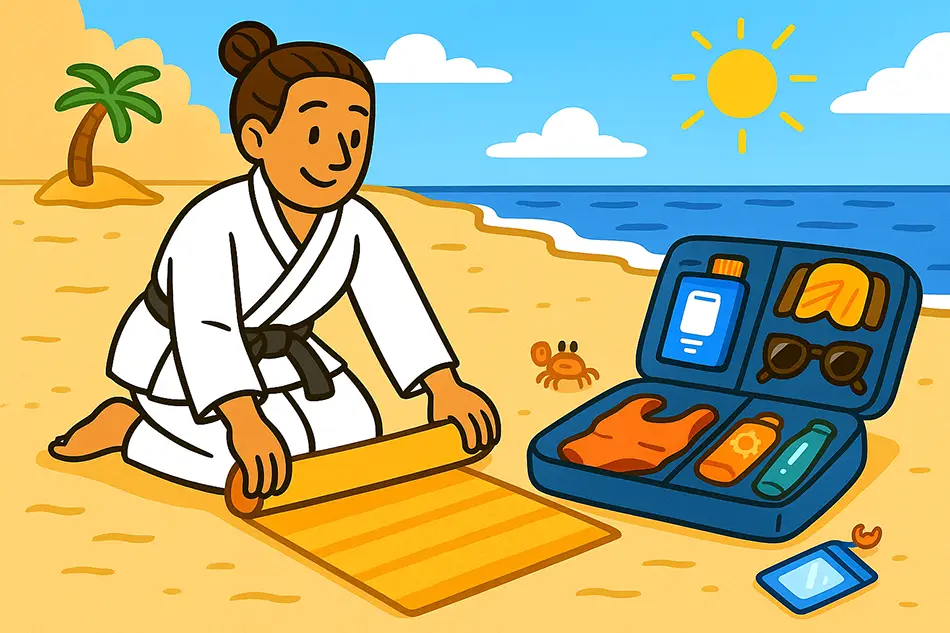
Adapting Your Packing to Different Trip Types
No two trips are exactly alike—and your packing shouldn’t be either. Here’s how to fine-tune your travel packing depending on your destination and adventure style.
Beach Getaway
- Quick-dry towel or microfiber beach towel
- Flip-flops or water shoes
- Waterproof pouch for phone and money
- Reef-safe sunscreen
- Hat and sunglasses
- Swimsuits (at least two if you’ll be swimming daily)
City Break
- Comfortable walking shoes for long days
- Compact umbrella or light rain jacket
- Day bag or crossbody for sightseeing
- Clothing that transitions from day to night
Outdoor or Hiking Trips
- Layers: base layer, insulation, windbreaker
- Hiking boots or trail shoes
- Refillable water bottle or hydration pack
- Headlamp or flashlight
- Emergency whistle and basic first aid
- Bug repellent and sunscreen
Long-Term or Multi-Country Travel
- Digital copies of all documents
- Extra passport photos (some visas require them)
- Compact laundry kit
- Multi-purpose clothing (sarong, buff, etc.)
- Reusable shopping bag for markets and groceries
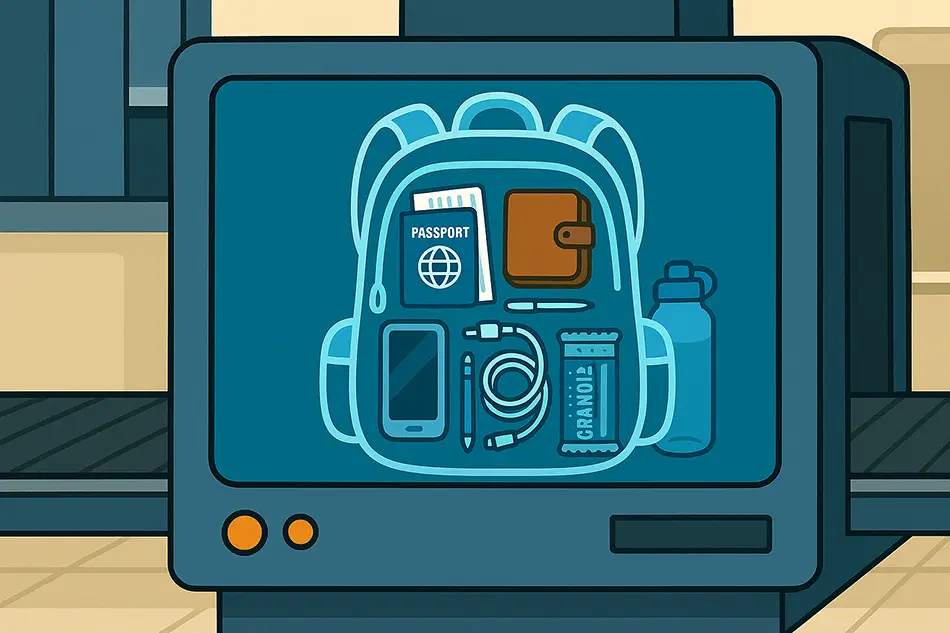
Easy-Access Items for Your Personal Bag
Your personal item (backpack, tote, or small day bag) should carry what you’ll want during the flight or ride, and what you can’t afford to lose.
Must-haves:
- Passport and boarding pass
- Wallet
- Phone and charger
- Power bank
- Travel insurance information
- A pen (for customs forms)
- Snacks and a reusable water bottle (empty until after security)
- A scarf or extra layer (planes can get cold)
Keeping these items together saves time at the airport and keeps you comfortable during transit.
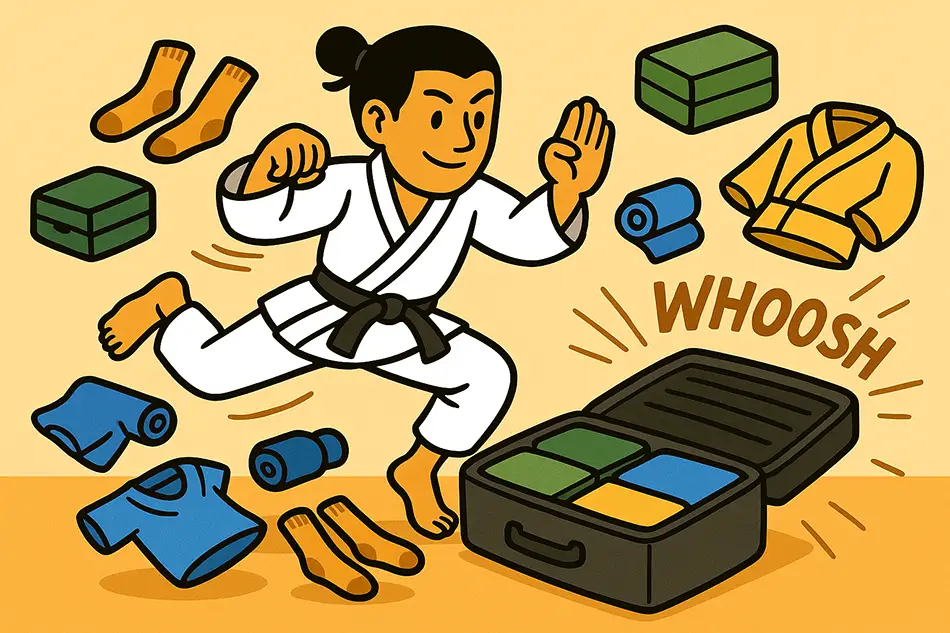
Efficient Packing Techniques
Packing well isn’t just about what you bring—it’s also about how you pack it. A few small changes in technique can create more space, reduce wrinkles, and keep your things organized during the trip.
Roll, Fold, or Both
- Rolling works best for t-shirts, soft fabrics, and items that don’t wrinkle easily. It saves space and helps you see everything at a glance.
- Folding is better for structured items like collared shirts or blazers.
- Combination: Many travelers use a mix—fold structured clothing and roll the rest.
Choose what suits your wardrobe and destination best.
Use Packing Cubes or Compression Bags
Packing cubes help organize your bag by category—tops in one cube, underwear in another. They also prevent the chaos that usually happens by day three of a trip.
Compression bags are a great option if you need to fit more in less space, especially for cold-weather clothing like jackets or bulky sweaters. Just be mindful not to go over weight limits—compressing clothes doesn’t make them lighter!
Distribute Weight Smartly. Place heavier items at the bottom (closer to your back if you’re using a backpack). Keep everyday essentials and electronics near the top or in external pockets for easy access.
Fill Dead Space. Use the inside of your shoes for socks, chargers, or even small toiletries. If your bag has interior straps, use them to tighten and stabilize everything inside.

Staying Secure and Comfortable
Travel feels easier when you know your belongings are safe and you’re set up for comfort. A few smart habits can go a long way in reducing stress and giving you peace of mind while you’re on the move.
Security Tips
- Use an anti-theft backpack with hidden zippers or lockable compartments if you’ll be in busy cities or public transport.
- Keep documents and money in multiple places—never store all your cards or cash in one wallet.
- Invest in RFID-blocking wallets to protect your cards from digital theft.
- Use TSA-approved locks on your suitcase or backpack to deter casual tampering while still complying with airport checks.
You don’t need to be paranoid — just thoughtful. A few small tools can make a big difference.
Want to go deeper on staying safe while you travel? Read here for our full Travel Safety Guide.
Packing for Comfort
So far, we’ve focused on traveling light and staying practical — but comfort deserves a place in your bag too. Sometimes, it’s the smallest items that bring the biggest relief on the road.
A pair of earplugs and a soft sleep mask can turn a noisy hostel or long-haul flight into a few hours of real rest. Travel pillows (especially the inflatable or compressible kind) aren’t for everyone, but if you’re someone who swears by them — don’t hesitate. Comfort is personal.
Here are a few other small comforts worth considering:
- A pair of compression socks for long flights or bus rides
- A small jar of balm or essential oil for calming moments (lavender is a classic)
- Your favorite tea bags or instant coffee for a familiar taste when you need grounding
- A soft, oversized t-shirt that doubles as sleepwear and homebase nostalgia
- A few incense sticks or a foldable eye patch to create your own mini-reset ritual
- A tiny bottle of hand lotion or lip balm — dry cabins and AC are ruthless
You don’t need to bring it all. But adding one or two comfort items — especially something from home — can help you feel more like yourself, even on the hardest travel days.

Final Packing Tips & Wrap-Up
Before you zip up that suitcase, here are a few final reminders to help you travel lighter, smarter, and with fewer last-minute regrets:
- Do a trial pack ahead of time. You’ll often realize what you don’t actually need—and what you forgot.
- Weigh your luggage at home. Many airports have strict weight policies, especially low-cost airlines.
- Leave a bit of space in your bag for souvenirs, local products, or just to avoid the stress of trying to repack a puzzle on the way home.
- Pack your liquids properly. Keep all travel-size liquids in a transparent, resealable bag — and place it on top for quick access during security.
- Keep must-haves on top. Anything you’ll need right away (chargers, toiletries, documents) should be easy to grab.
- Check your airline’s rules again. Sizes, weights, and what counts as a personal item can vary more than you think.
With the essentials covered, all that’s left is to zip up, breathe out, and trust your prep.
We hope this travel packing guide gave you both fresh ideas and practical tips to shape your own system. Because when you pack with clarity, you don’t just save space — you give yourself more room to explore, notice, and enjoy wherever the road takes you.
And hey—if you’ve made it through this guide, you’ve officially earned the blue stripe on your Trip Kwon Do Green Belt. You know the moves. Now it’s just about practicing them on the road.
Want to level up even further? Head over to our Travel Academy for more deep-dive guides on planning, safety, budgeting, gear, and beyond.
Safe travels, and happy packing. Wherever you’re heading—make it count.


